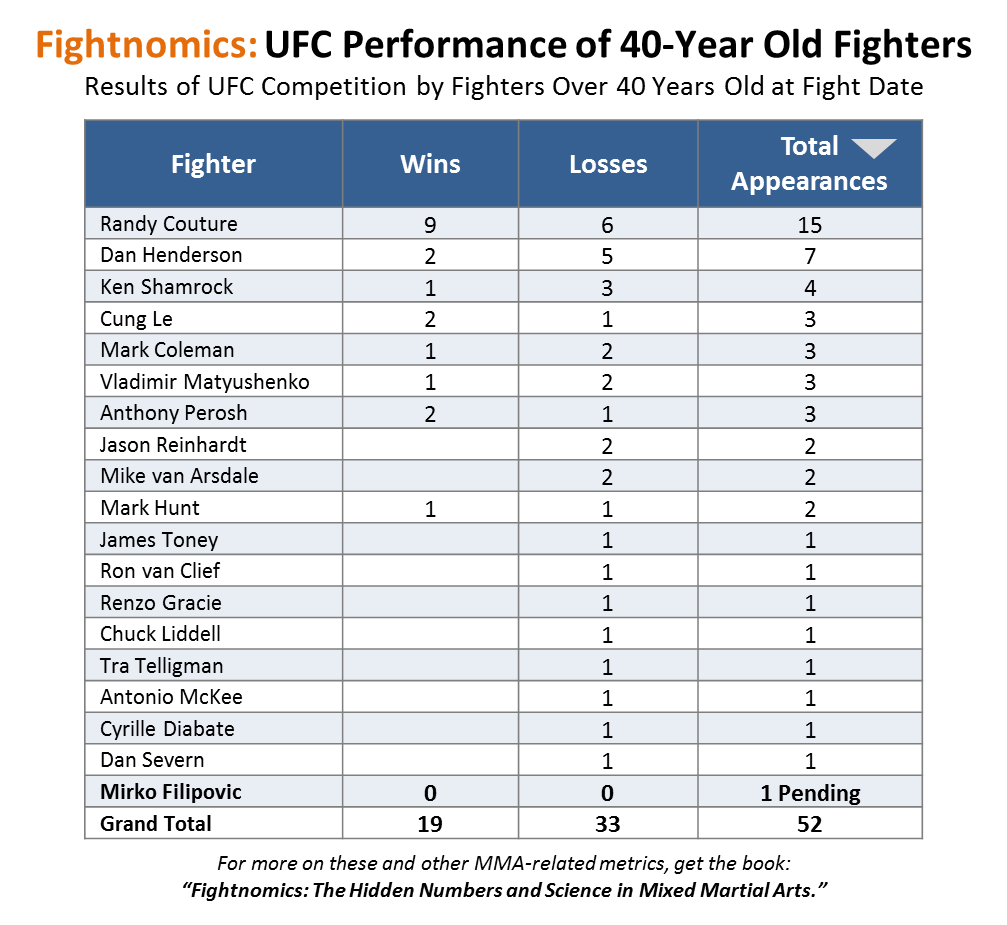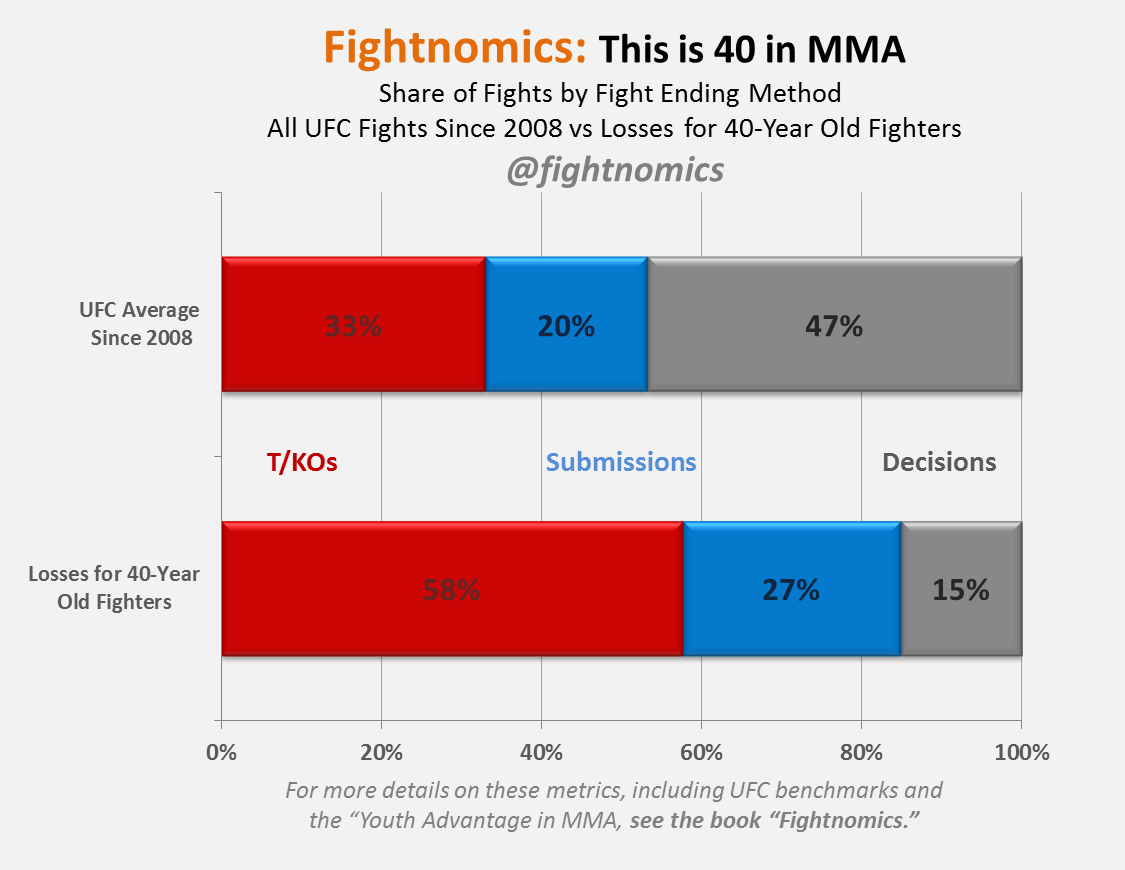By @fightnomics When Mirko “Cro Cop” Filipovic walks into the Octagon this weekend in Poland, he’ll be the 19th fighter to do so under the UFC promotion at over 40 years of age. He faces Gabriel Gonzaga, who defeated him in a number one contender matchup nearly eight years ago at UFC 70. That these two Heavyweights are theoretically not out of the title picture is kind of a big deal. The winner could be within striking distance of a title shot, and in the current injury-prone environment they would arguably be a realistic contender. It would be an MMA equivalent of winning a tennis championship at age 30, or Olympic gymnastics gold at 20. The fact is: things get harder in sports as years go by. But MMA is an even more unforgiving place to lose a step in sports, because when you lose, you can also get badly hurt. So although Mirko Cro Cop still has a decent chance this weekend against his former title-shot spoiler Gonzaga, the overall question of how UFC fighters perform over 40 is important, and somewhat bleak. Let’s break it down first at a high level.
The 19 UFC competitors who have competed over the age of 40 have not fared too well. The overall 19-33 record results in a win rate of just 37%. The performance of fighters not named Randy Couture is even worse, with just a 27% win rate. In fact, only three fighters have managed to win more often than they lost past the age of 40: Randy Couture (9-6), Cung Le (2-1), and Anthony Perosh (2-1). The other 15 fighters had losing records once they hit the 40-year old threshold. When 40-year olds compete, they are generally on the wrong side of a sizable Youth Advantage to their opponents. While age certainly brings experience, it also brings greater accumulation of head trauma while practicing and competing that slowly degrades the brain’s performance and resilience. That’s the critical career tradeoff and the price of wisdom in MMA. When we look closely at the losses by 40-year olds, the real difference becomes glaring.
Today, MMA is a sport where roughly half of all fights go to a decision. The finish rate in the graph goes back to 2008 when there were more finishes (and mostly larger fighters), and today resides right around 50%. However, when 40-years fight, they’re getting finished at an 85% rate and only making to a decision 15% of the time. The biggest difference is the knockout rate, which approaches nearly double the baseline when 40-year olds lose. An important caveat is that the fighters on the 40-year list are mostly in the upper weight classes where TKOs are more common, but even adjusting for this isn’t enough to account for the leap in finishes. Heavier fighters also see few submissions, yet the submission rate in the older group is also higher. In some cases, submissions are merely a tactical opening caused by damaging strikes, so the boost in the overall finish rate is fueled by both. Perhaps mercifully, the only three times when two fighters over 40 were pitted against each other, the result was a submission finish in each case, rather than brutal KO. That covers three of Randy Couture’s wins over Mike van Arsdale (anaconda choke), Mark Coleman (rear naked choke), and James Toney (arm triangle). This weekend’s main event in Poland matches two fighters only five years apart in age, something that should always be the case when a much older fighter enters the cage. But there will be a 10-year age difference when (or if) 51 year-old Ken Shamrock faces 41 year-old Kimbo Slice at Bellator 138. In that case, Bellator is boldly going where the UFC has not, as the combined age of almost 93 years will be even higher than the UFC record of 91.7 set by Randy Couture and Mark Coleman. The sport of MMA is relatively young, but not so young that many fighters who helped bring the sport to larger popularity are now entering the difficult phase of considering retirement. Depending on how these upcoming fights end, there may be increased attention to the prospect of competing in MMA too long. It’s not an issue to be taken lightly. A graceful early exit from the sport may leave a tempting amount of money on the table for fighters who rarely can retire comfortably off of MMA earnings. But presenting the downside of competing at a risky age needs to be made explicit so that fighters understanding the tradeoff with their health. Don’t forget to check the “Fightnomics” book to learn all about MMA performance metrics.

